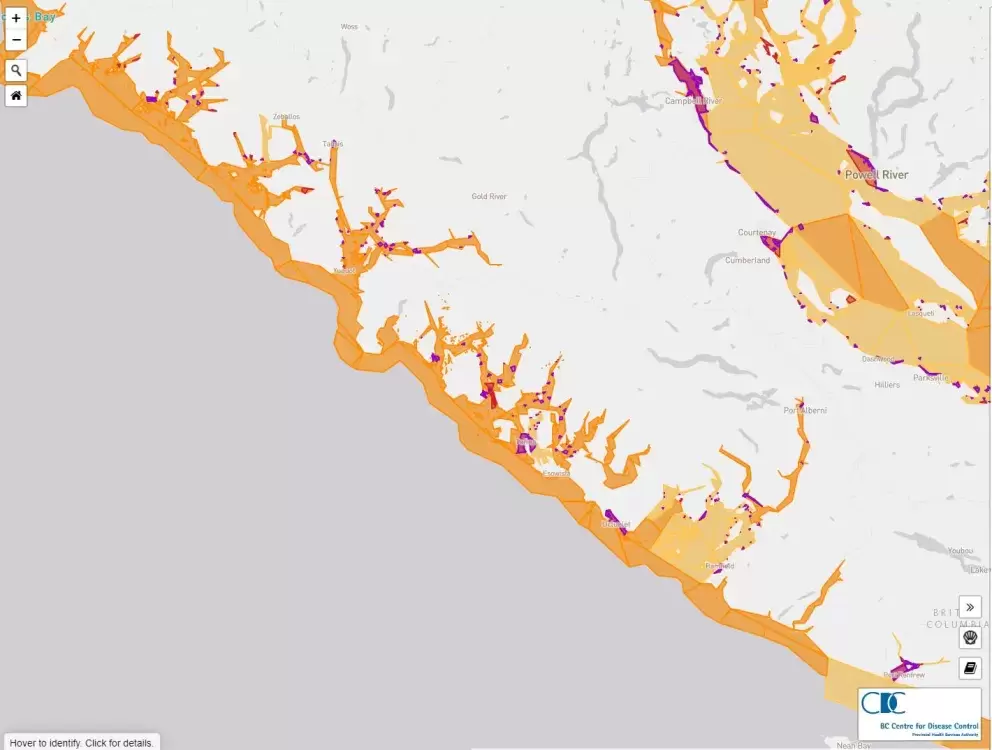As ocean temperatures rise during the summer months, the BC Centre of Disease Control (BCCDC) is cautioning the public about the higher concentrations of Vibrio bacteria found in warm ocean waters.
Ten cases of Vibrio illness were recorded between July 12 and 21. At least six of the reported cases are from self-harvesting seafood, or environmental exposure to the water, said Lorraine McIntyre, BCCDC food safety specialist.
Vibrio is a naturally occurring marine organism that multiplies and grows when water temperatures get above 15 degrees Celsius, she said.
During this time of year, anyone harvesting shellfish, such as mussels, clams, crabs or oysters, is encouraged to keep it cool. McIntyre said she also recommends that it’s thoroughly cooked before consumption.
By bringing all seafood to a boil, McIntyre said that you can get rid of the Vibrio bacteria, which can cause gastrointestinal illness resulting in diarrhea, vomiting and abdominal cramps.
Harvesting on a receding tide is another way to limit exposure, she added.
“Shellfish are filter feeders,” said McIntyre. “If they're pumping out the water, they're pumping out the bacteria that may be multiplying.”
The BCCDC has updated their online interactive shellfish harvesting sites status map, which identifies all of the areas that are open and closed to harvesting.
Certain regions might be closed due to the presence of biotoxins, which can’t be destroyed by cooking and are toxic to human health, said McIntyre.
A separate map shows sea surface temperatures using satellite data. By measuring the ocean’s temperature at a depth of around 10 metres below the surface, the BCCDC is able to “assess temperature trends over time to show warming patterns in the ocean that would affect shellfish harvesting.”
Data for Kyuquot Sound, Nootka Sound, Clayoquot Sound and Barkley Sound can be accessed on the BCCDC’s online sea surface temperatures map.
Recently, the BCCDC partnered with the First Nations Health Authority on an Indigenous-led project, We All Take Care of the Harvest (WATCH).
Four First Nations communities are involved in the pilot project, including Tseshaht, in Port Alberni.
Tseshaht First Nation Fisheries Manager Dave Rolston said the program offered an opportunity for the nation to increase their focus on the stewardship of aquatic resources.
“[WATCH is] an attempt to provide capacity to First Nations to take on food security and safety issues that are long outstanding,” said Rolston.
First Nations communities are grappling to understand the health effects of seafood and whether it is safe to harvest and to eat, he said.
Regulatory issues and climate change also top the list, Rolston added.
Currently in its initial stages, the program focuses on the harmful consequences of algae blooms, said Rolston.
By setting the nation up with sampling equipment, including plankton nets, a YSI meter and a microscope, Rolston said WATCH allows Tseshaht to address and anticipate upcoming seafood challenges.
“We need to ensure that we're on top of things,” he said. “And that we're providing as much support, and a safety net for the members that are going out and harvesting shellfish.”

